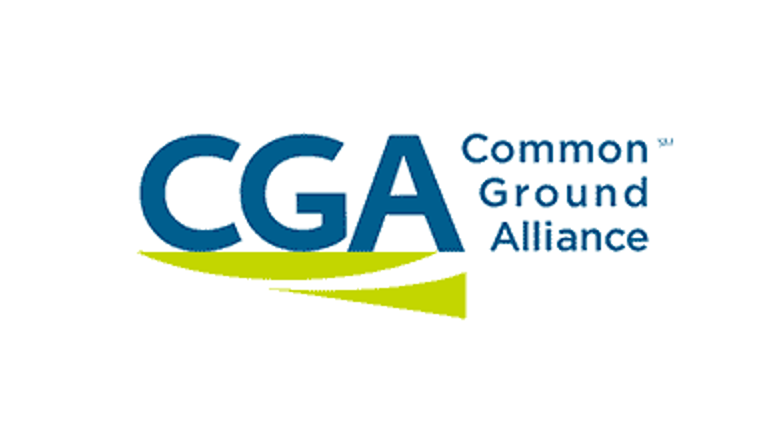Preparing for Confined Space Entry

A confined space entry program is a plan that explains the company’s policy and procedures for entering into confined spaces. The plan will need to establish policy, define confined space terminology, describe the different types of confined spaces and establish procedures for entering a confined space. All this will now have to be based on the requirements set forth by OSHA’s new standard: Subpart AA, 29 CFR 1926.1200 to 1926.1213.
OSHA’s General Requirements
The final rules set forth by 1926.1203 contain general requirements with which every employer with employees who may enter into or be exposed to a confined space must comply.
Before work begins at a jobsite, employers must ensure that a competent person identifies all confined spaces into which one or more of their employees may have to enter. The competent person — through the use of a gas monitor and through other observations — will have to determine if the confined space is a permit-required confined space. Fortunately, many confined spaces found in the construction industry will not be permit-required, though many will have to be entered utilizing alternative procedures established by the new rule.
If a confined space exists, the employer will have to ensure that his or her employees, controlling contractor, other contractor’s employees and their representatives are notified of the existence and location of — and the dangers posed by — each permit space. Even employers who are notified of an existing confined space are expected to take action to ensure their employees will not attempt to enter the confined space and are aware of the hazards.
When a permit-required confined space is identified and the competent person determines that all the physical hazards can be eliminated or isolated and an actual or potential hazardous atmosphere can be controlled by forced air ventilation, the classification of the space may be downgraded from a full-fledged permit-required confined space, which will reduce many compliance requirements. The employer will still have to continuously monitor the atmosphere within the space and be able to demonstrate that forced air ventilation alone is sufficient to ensure that the permit space is safe for entry and that entrants can evacuate the space safely if the ventilation fails.
By utilizing the alternative procedures set forth in 1926.1203, the employer may allow workers to enter the space without complying with some of the requirements set forth for permit-required confined spaces. Once the competent person has determined that all hazards in the permit space have been eliminated or isolated, the space may be certified by the competent person for entry utilizing alternative procedures. When this has been accomplished, the employer will not have to implement the permitting process or use an entry permit. Nor will the employer have to designate and evaluate a rescue service, though having a rescue/emergency plan is important. If entry into the space is necessary to reclassify the space, entry must be treated as permit-required and all the provisions of the standard apply.
Regardless of the type or classification of a confined space, training is required for all who may enter into a confined space. All employees whose work is regulated by this standard must be provided with training to ensure they possess the understanding, knowledge and skills necessary to perform their work safely within and around confined spaces. Workers must be trained in both a language and vocabulary that they can understand prior to being assigned duties related to working in and around confined spaces. Training will also be necessary when a worker’s assigned duties change, new or different hazards are anticipated or a lack of knowledge on the part of an employee is identified. Training records, including the employee’s name, name of the trainer and date of training, must be maintained.
Preparing the Program
Before preparing a written confined space entry program, read the new standard. I also suggest that you read the preamble — Section III. Summary and Explanation of the Final Rule — to the standard because it explains the reasoning behind each of the requirements set forth in the final rule; it is not necessary to read the cost analysis. All this can be found on OSHA’s website.
Basically, a confined space entry program has to answer some questions and establish a procedure for safe entry into a confined space. Questions that must be answered are:
- What is the purpose of the Confined Space Entry Program?
- What is the company policy for entering confined spaces?
- What is a confined space?
- What is a permit-required confined space?
- What is meant by alternative entry procedures?
- What are the different types of confined spaces as set forth by the OSHA standard?
- Who is responsible for implementing the confined space entry plan?
OSHA has made it very clear (1926.1204) that a permit-required confined space program must include:
Measures necessary to prevent unauthorized entry. These include posting warning signs, as well as notifying employees, employee representatives and controlling contractors of the existence and location of confined spaces.
Procedures for identifying and evaluating confined space hazards and classifying the confined space. Use a checklist and/or permit to evaluate each confined space.
Means, procedures and practices for safe entry into confined spaces. Establish a standard operating procedure for classifying and entering different types of confined spaces or following the procedures established for entering permit-required confined spaces.
Procedures for testing and continuously monitoring the atmosphere within the confined space. Gas monitors are now a tool of the trade, and workers need to know how to use them properly. The employer needs to ensure that the confined space entry crews are equipped with properly calibrated gas monitors. Note: Gas monitors have dropped in price considerably and they are also available from some rental companies.
Provisions for providing all the equipment necessary to enter and work within a confined space safely. Depending on the confined space configuration, different equipment such as ladders, tripods, retrieval systems, portable forced-air ventilation and personal protective equipment are generally necessary to enter confined spaces safely.
Requirements for having an attendant outside all permit-required confined spaces during entry operations. Although having an attendant stationed outside a confined space is not always required by the new rule, it is always a good idea to use the buddy system.
Designation of each person who is to have an active role in permit-required confined space entry operations.
Designate the competent person, entry supervisor, attendant and entrant. Everyone involved should know his or her assigned job and responsibilities.
Procedures for summoning rescue and emergency services. Start by using a non-entry rescue system (harness, tripod and retrieval device) when possible; check with local rescue services to see if they can handle the type of confined space rescue based on the type of space. Note: Many fire departments are ill equipped and not trained to handle confined space rescue; establish an emergency and rescue plan.
A system for the preparation, issuance, use and cancellation of entry permits. Create a checklist and entry permit; explain when they must be used and how they should be cancelled when necessary or when the work is complete.
Procedures for coordinating entry operations with other employers onsite who may have employees who could be affected by entry operations. Communicate and coordinate with other employers onsite to ensure that no unauthorized employees enter the space. Notify other employers when the work will begin and end.
Procedures for closing the space and canceling the permit. Establish a procedure to ensure that all workers have exited the confined space before the space may be closed and the permit cancelled.
Procedures for reviewing the adequacy of the permit entry program. Establish a plan for reviewing the permit program to determine if there are any discrepancies that could endanger workers such as unauthorized entry, undetected hazards not covered by the permit, an injury or near-miss during entry, employee complaints, etc.
Procedures for annual review of the permit entry program. Establish a plan to review the permit-required confined space program annually to ensure it is working as planned. Keep all permits for 12 months for annual review.
Although OSHA has provided a lot of leeway for entry into confined spaces and has emphasized and set forth requirements specifically for entry into permit-required confined spaces, NUCA recommends the implementation of many of the requirements even when it is not necessary to designate a confined space permit-required. By utilizing continuous monitoring, forced air ventilation and mechanical retrieval systems, and by assigning an attendant and having a rescue plan, employers can significantly reduce the chance of an employee being injured while working in and around confined spaces. Going beyond what OSHA requires to enter a confined space of any classification will help to ensure safe confined space operations.
Temporary Enforcement Policy for Construction Work in Confined Spaces
OSHA has issued a temporary enforcement policy for construction work in confined spaces. This memorandum provides guidance on the enforcement of the Confined Spaces in Construction standard published on May 4, 2015. The new standard went into effect on August 3, 2015. Requests for an extension of the effective date have indicated a need for additional time for training and the acquisition of equipment necessary to comply with the new standard. OSHA will not delay the effective date, but instead will postpone full enforcement of the new standard for 60 days from the effective date of Aug. 3, 2015, to Oct. 2, 2015. During this 60-day period, OSHA will not issue citations to an employer making good faith efforts to comply with the new standard, as long as the employer is in compliance with either the training requirements of the new standard, found at 29 CFR 1926.1207 or the training requirements found at former 29 CFR 1926.21(b)(6)(i), which provides:
All employees required to enter into confined or enclosed spaces shall be instructed as to the nature of the hazards involved, the necessary precautions to be taken and the use of protective and emergency equipment required. The employer shall comply with any specific regulations that apply to work in dangerous or potentially dangerous areas.
- Employers who fail to train their employees consistent with either 29 CFR 1926.1207 or 1926.21(b)(6)(i) would properly be cited for violation of 1926.1207(a). Factors OSHA will consider when evaluating whether an employer is engaged in good faith efforts to comply with the new standard include:
- If the employer has not trained its employees as required under the new standard, whether the employer has scheduled such training;
- If the employer does not have the equipment required for compliance with the new standard, including personal protective equipment, whether the employer has ordered or otherwise arranged to obtain such equipment required for compliance and is taking alternative measures to protect employees from confined space hazards; and
- Whether the employer has engaged in any additional efforts to educate workers about confined space hazards and protect workers from those hazards.
NUCA Confined Space Entry Training Program
NUCA has had a Confined Space Entry Training Program for well more than 20 years. The program was based on the requirements set forth in 1910.146, which is the general industry Permit-Required Confined Space standard. Although this standard exempted construction employers, NUCA believed that utilizing this standard as a guide for creating a confined space training program was appropriate, making it much easier for employers who have utilized the NUCA training to get into compliance with the new standard.
NUCA’s recently revised and updated Confined Space Entry Training is now available from authorized NUCA instructors. To find a NUCA instructor, visit the NUCA website at www.nuca.com and click on Safety.
George Kennedy is NUCA Vice President of Safety.




